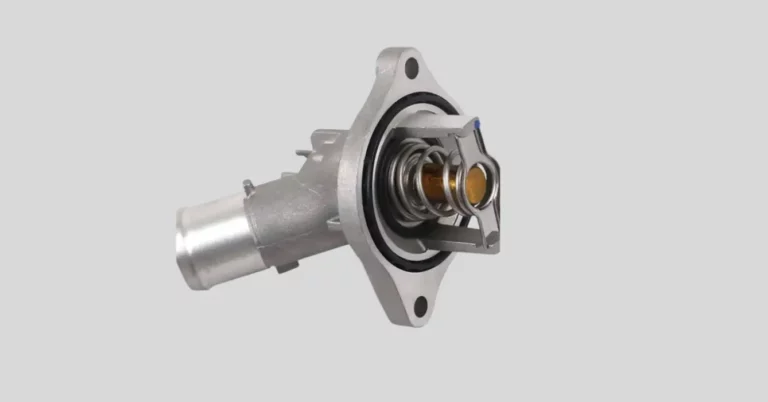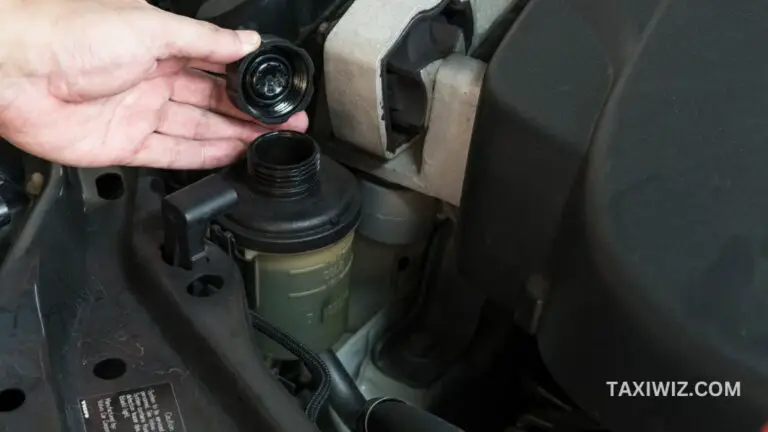Why Powertrain Malfunction Reduced Power? [ With Fixes!]
If your vehicle is experiencing a powertrain malfunction, then you’re supposed to get reduced power from the engine. Such malfunctions also trigger a warning indicator on the dashboard.
Powertrain Malfunction Reduced Power can be caused by a variety of issues including,
- Regular wear and tear over time
- Engine misfire
- Insufficient oil
- Contaminated oil
- Transmission issues
- Leaks in the cooling system
As you can see, the list is quite long. So, it may take you some time to troubleshoot all these problems. Today, we’ll go through the low-difficulty problems to high-difficulty ones so it’s easier for you to troubleshoot. Let’s get right to it!
5 Symptoms that You Have a Malfunctioning Powertrain
In the following, we’ll discuss the symptoms that you’re likely to come across in case you have a faulty powertrain.
Noises from the Vehicle
In case you have a faulty powertrain, you’re likely to hear noises from the vehicle, especially when you start accelerating or just starting from idle.
The noise can be whirring, growling, grinding, or humming, and is caused due to friction between different components such as gears or bearings.
Vibration or Shaking
Another common byproduct of a faulty powertrain is vibrating or shaking a vehicle.
The vibration can come as a sudden jolt or a long-lasting hum. The vibration is usually caused when there’s an imbalance in the rod bearings, flywheel, or crankshaft.
Leaks
In certain cases, a faulty powertrain leads to leaks in the vehicle. If you find a puddle of liquid under your vehicle, then it’s time to get it checked.
Check Engine Light
A faulty powertrain will trigger the check engine light on your dashboard. That being said, note that the Check Engine light can refer to any issue with the vehicle, so don’t suspect the powertrain until further inspection.
Reduced Power
Powertrain problems usually put your vehicle in limp mode. If there’s a problem with the powertrain, you’ll start hearing noises from the dashboard.
Then, you’ll find the message “Powertrain Malfunction: Reduced Power”. There may be other messages along this as well.
Right after this, the engine control unit of your vehicle will resort to a special program that limits the overall power output as well as the torque.
This also means that the RPM of the engine will be limited. So, you won’t be able to reach high speeds and overtake other vehicles.
Fortunately, it won’t disable other functions of the vehicle such as the air conditioning. However, you shouldn’t drive in limp mode too long, as the underlying issues may lead to permanent damage to the vehicle components.
How to Identify and Fix Engine Issues?
The engine is one of the most crucial components of the powertrain, so it’s important to work on that first. Vehicle engines are designed to be sturdy.
However, lack of maintenance can deteriorate the performance and quality of the engine.
An inefficient engine can lead to various issues that trigger powertrain problems over time. These are as follows:
- Contaminated Oil
Unless you’re using synthetic oil, it’s necessary to change the oil every 3,000 miles. Otherwise, the oil gets contaminated with external dirt and grime, ultimately leading to various problems.
The main function of engine oil is to lubricate and regulate the temperature of the engine.
If contaminated, the presence of dirt and dust particles can create friction and lower the boiling point of the oil. This can wear out the hardware and even the oil may evaporate.
To prevent this, you must change the engine oil after regular intervals.
- Engine Cylinder Misfire
If you’re hearing noise coming from under the bonnet, chances are that the engine is misfiring. This can happen if the spark plug, coil, or fuel injection system is faulty. It can also be caused by a combination of all these.
Cylinder misfires shouldn’t be taken lightly as these can lead to permanent damage to different components such as pistons, head gaskets, and sensors.
To fix the cylinder misfire, you need to troubleshoot each component, find the faulty component, and replace it.
- Issue with Radiator
The radiator of the engine is responsible for keeping the system cool. If the radiator fails, the engine will overheat and eventually, its life will reduce.
In most cases, it’s a radiator leak that’s causing the problem. Check for leaks and patch them up, and you should be good to go. Sometimes the problem can be with the radiator cap, but fortunately, these are easy and cheap to replace.
How to Identify and Fix Transmission Issues?
The transmission system is what helps transfer the energy generated in the engine to the wheels.
Depending on the model of the car, the transmission system can be automatic or manual. Regardless, the transmission system is very complicated, so even the slightest problems can lead to major issues.
The transmission issues can be:
- Low Level of Fluid
Transmission fluid plays an important role in cooling the transmission system, which in turn keeps it efficient. If the fluid dips below the recommended level, then the transmission system will overheat.
When it overheats, its lifespan is going to reduce, while causing further problems such as latency in shifts.
- Faulty Solenoid
The transmission’s cooling mechanism comes with built-in solenoids. The main purpose of the solenoid is to regulate the flow of transmission fluid so it can cool the transmission optimally.
A faulty solenoid fails to regulate the proper flow of fluid, and it leads to slippage of transmission.
Should You Attempt to Repair the Powertrain In Case You Have a Warranty?
In case you have a powertrain warranty, you shouldn’t attempt to fix it yourself, as this will void the warranty. So, we recommend driving or towing your vehicle to the repair shop or outlet from where you can receive the warranty services.
If you must repair it yourself, you should check the warranty papers to learn what it covers.
You may be able to find workaround fixes that won’t void the warranty. You can also ask the dealer or manufacturer directly for accurate information.
Cost of Fixing Powertrain Problems
There are a lot of factors to consider here, including the model and type of vehicle. Also, when referring to powertrain problems, we’re referring to a wide range of hardware.
Whether the problem is with the engine, drivetrain, or radiator will determine the cost of fixing the problem.
In many cases, you can get away with a very small expense where you’ll just have to swap out a spark plug. In this case, the maximum you’ll need to spend is $50.
On the other hand, if an entire system is faulty, let’s say the radiator, then you’ll have to spend about $1000.
So, you need to identify the faulty component before ascertaining the cost required to fix it.
Powertrain Malfunction Reduced Power- (FAQs)
1. Can You Keep Driving with the Check Engine Light On?
It’s not safe to drive with the check engine light on. However, if the problem is with the oxygen or airflow sensor, you can take a few days before hitting the shop.
2. How Can I Prevent Powertrain Problems?
The easiest and best way to prevent a powertrain problem is to maintain it regularly. Just change the oil and oil filters regularly.
3. What Does the Powertrain Indicator Light Mean?
The powertrain indicator light usually refers to a malfunction, but it doesn’t point to a specific issue. For accurate information, you’ll need an OBDII scanner.
Conclusion
As you can see, a powertrain malfunction reduced power issue can be complicated to fix. This is because the powertrain comprises multiple major components of the vehicle.
These components are made of different hardware, and even the smallest of pieces can jeopardize the entire powertrain.
So, if you’re facing issues with the powertrain, we recommend starting off with simple issues that can be fixed at home. You can always visit a repair shop if you fail to fix it yourself.



